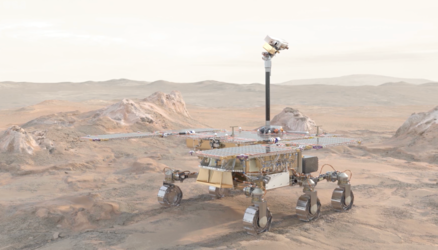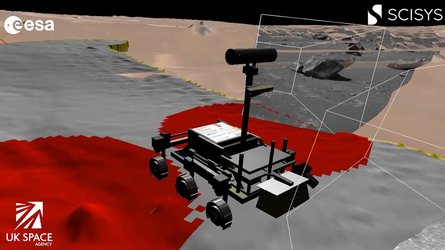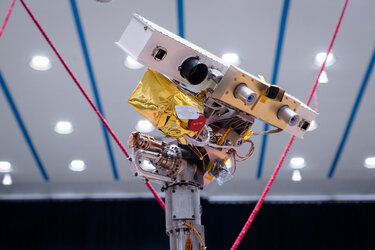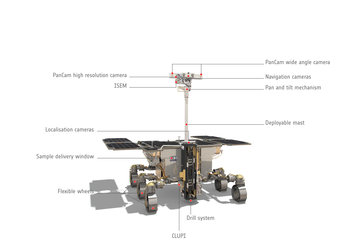Accept all cookies Accept only essential cookies See our Cookie Notice

About ESA
The European Space Agency (ESA) is Europe’s gateway to space. Its mission is to shape the development of Europe’s space capability and ensure that investment in space continues to deliver benefits to the citizens of Europe and the world.
Highlights
ESA - United space in Europe
This is ESA ESA facts Member States & Cooperating States Funding Director General Top management For Member State Delegations European vision European Space Policy ESA & EU Space Councils Responsibility & Sustainability Annual Report Calendar of meetings Corporate newsEstablishments & sites
ESA Headquarters ESA ESTEC ESA ESOC ESA ESRIN ESA EAC ESA ESAC Europe's Spaceport ESA ESEC ESA ECSAT Brussels Office Washington OfficeWorking with ESA
Business with ESA ESA Commercialisation Gateway Law at ESA Careers Cyber resilience at ESA IT at ESA Newsroom Partnerships Merchandising Licence Education Open Space Innovation Platform Integrity and Reporting Administrative Tribunal Health and SafetyMore about ESA
History ESA Historical Archives Exhibitions Publications Art & Culture ESA Merchandise Kids Diversity ESA Brand CentreLatest
Space in Member States
Find out more about space activities in our 23 Member States, and understand how ESA works together with their national agencies, institutions and organisations.
Science & Exploration
Exploring our Solar System and unlocking the secrets of the Universe
Go to topicAstronauts
Missions
Juice Euclid Webb Solar Orbiter BepiColombo Gaia ExoMars Cheops Exoplanet missions More missionsActivities
International Space Station Orion service module Gateway Concordia Caves & Pangaea BenefitsLatest
Space Safety
Protecting life and infrastructure on Earth and in orbit
Go to topicAsteroids
Asteroids and Planetary Defence Asteroid danger explained Flyeye telescope: asteroid detection Hera mission: asteroid deflection Near-Earth Object Coordination CentreSpace junk
About space debris Space debris by the numbers Space Environment Report In space refuelling, refurbishing and removingSafety from space
Clean Space ecodesign Zero Debris Technologies Space for Earth Supporting Sustainable DevelopmentLatest
Applications
Using space to benefit citizens and meet future challenges on Earth
Go to topicObserving the Earth
Observing the Earth Future EO Copernicus Meteorology Space for our climate Satellite missionsCommercialisation
ESA Commercialisation Gateway Open Space Innovation Platform Business Incubation ESA Space SolutionsLatest
Enabling & Support
Making space accessible and developing the technologies for the future
Go to topicBuilding missions
Space Engineering and Technology Test centre Laboratories Concurrent Design Facility Preparing for the future Shaping the Future Discovery and Preparation Advanced Concepts TeamSpace transportation
Space Transportation Ariane Vega Space Rider Future space transportation Boost! Europe's Spaceport Launches from Europe's Spaceport from 2012Latest

SAFER rover fitted with science instruments
Thank you for liking
You have already liked this page, you can only like it once!
The Bridget rover used for the SAFER field trial in Chile's Atacama Desert being fitted with its trio of scientific instruments on the morning of 8 October 2013. These sensors operate in combination for navigation, sample acquisition and analysis:
• The Panoramic Camera (PanCam) provides stereo 3D terrain imagery to help locate the rover’s position in terms of local geography, provide a geological context of sites being explored, and help select the best sites to carry out detailed analysis, as well as imaging drill samples before the rover ingests them. It can also be used to study atmospheric properties and capture high-resolution images of difficult-to-access locations such as craters of rock walls. A PanCam emulator called AUPE-2 is being used for SAFER, developed by Aberystwyh University, with its 3D vision processing overseen by Joanneum Research from Austria.
• The Close-Up Imager (CLUPI), developed by the Space Exploration Institute in Switzerland, is a robotic substitute for one of a geologist’s most useful instruments: a hand lens. High-resolution imaging of rock surfaces, soil and wind drift deposits is crucial for understanding the geological context of the site being explored. CLUPO can characterise rock outcrops as well as studying drilled samples.
• The WISDOM ground-penetrating radar, the work of the LATMOS research lab of the Centre National de la Recheche Scientifique in France peers through rock and soil to provide a detailed view of the shallow subsurface just beneath the rover, giving a 3D context to the site being explored, measuring its physical properties and hunting for well-compacted sedimentary deposits that might be associated with a past water-rich environment.
-
CREDIT
ESA - Michel van Winnendael -
LICENCE
ESA Standard Licence

Eyes on Mars

Remote control team’s view of SAFER rover

Rover eyes

SAFER's Bridget rover as if on Mars















 Germany
Germany
 Austria
Austria
 Belgium
Belgium
 Denmark
Denmark
 Spain
Spain
 Estonia
Estonia
 Finland
Finland
 France
France
 Greece
Greece
 Hungary
Hungary
 Ireland
Ireland
 Italy
Italy
 Luxembourg
Luxembourg
 Norway
Norway
 The Netherlands
The Netherlands
 Poland
Poland
 Portugal
Portugal
 Czechia
Czechia
 Romania
Romania
 United Kingdom
United Kingdom
 Slovenia
Slovenia
 Sweden
Sweden
 Switzerland
Switzerland
























